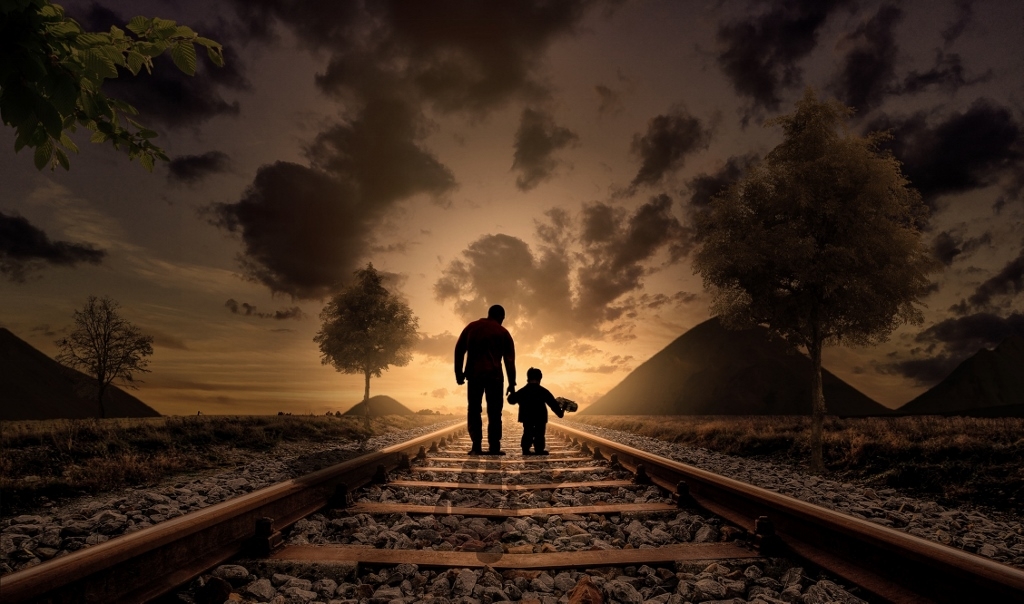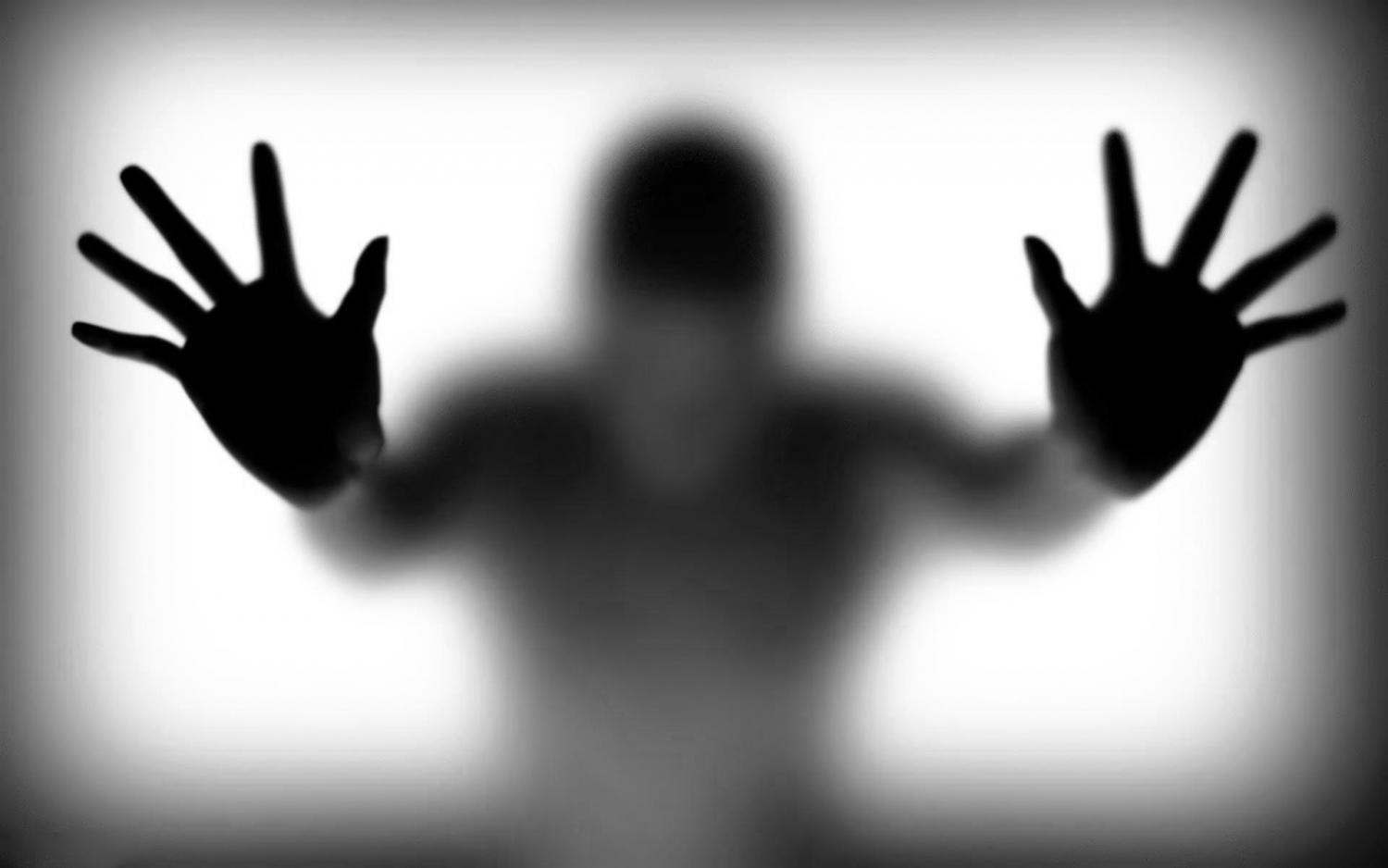
Reflections from the Other Side of Reason – The edge of almost
Since 2013, recognized author and community leader for mental health, David Gibson, has battled the inner world of PTSD to find some measure of hope within. He uses his writing to explore how his journey as a survivor has enabled him to come to terms with PTSD and the new reality of his life. His 'Reflections from the Other Side of Reason' not only invite the reader into his life, but offers insights on how to grow and build resiliency. By sharing his experiences he takes away any toll for others to walk down the same road.
[The edge of almost]
There is always absolution with clarity.
The edge of almost suspends as if to say …
There is no greater pain than losing your way.
I try and grasp at any meaning of control.
Floating above into the down below.
Searching for the end to a new beginning.
Simply a state of being.
No longer feeling anymore pain.
One of the hardest things you will ever have to do, is to grieve the loss of a person who is still alive. – Unknown
The edge of almost.
The world had become divided — between the before and the after of the crash. It was as if a large vortex had opened up, and all the images of the carnage had been violently pushed inside of me and into my minds dark void. Only people who’ve experienced this kind of severe trauma can fully comprehend what it means to be totally obliterated by a single moment.
The emotional whiplash of the bus and train crash reverberated into a manifold of symptoms; they remain, even 5 years later.
And they are symptoms I am far from alone in experiencing.
Normally when we think about “PTSD,” our minds jump to those who’ve been in combat. While it is certainly an issue for those who’ve been in real-life war zones, Post-Traumatic Stress Disorder (PTSD) and Complex PTSD isn’t exclusive to war veterans. In fact, many survivors of childhood emotional neglect, physical or emotional abuse, domestic violence, sexual assault, natural disasters, accidents and fleeing war-torn strife can suffer from the symptoms of PTSD or Complex PTSD if they endured long-standing, ongoing and inescapable trauma.
These individuals face combat and battle in invisible war zones that are nonetheless traumatic and potentially damaging.
One of the core tenets of trauma is the self-protective impulse it instills in us to fight or flight. The mind starts to shut systems down, causing us to lose contact with important functions such as the ability to plan, to reason or think, even to formulate words.
The biggest way that PTSD impacts the body and brain is that it affects your arousal level. The emotion centers of the brain are on high alert and overreacting. All the other functions are underreacting, because the emotion centers are taking up so much of the brain and the body’s energy; making it very hard for you to think, organize your thoughts, or even speak.
In the fight response — a person experiences hyper-arousal which causes jittery, tense, hot, and overwhelming sensations. The body prepares to defend itself from danger. In the case of suicide survivors, however, there is no immediate physical threat, yet the body and mind still perceive it that way.
On the other side of this is the flight response, which is considered hypo-arousal. It is the feeling of being numb, shut down, or disassociated from your body, so that you not only conserve energy, but feel less pain from whatever is threatening you.
One of the most important factors in the development of a trauma reaction like PTSD is a sense of not being able to rescue yourself from the immediate danger you’re in, and ultimately feeling helpless. This sense of hopelessness can lead to PTSD and other trauma reactions, because your body doesn’t get to have the experience of activating a productive fight or flight response.
As a trauma survivor, these cumulative losses often go undetected because of the powerful stigma and shame associated with mental illness. Even when you’re still in shock, you’re often encouraged to move on quickly, all while fighting off intrusive thoughts that replay over and over again in your mind.
This insurmountable silence and reticence to acknowledge publically the reality of living with trauma or PTSD can cast a shadow over your life and your recovery. Somehow you live with the rift between yourself and others knowing that by not naming the obvious will somehow protect everyone from the truth. I wonder why we still have such a hard time still to this day talking about self-harm and suicide. I truly get that it is a subject matter that few want to explore or engage in discussion, but when someone acts on the unthinkable, should we not break this silence?
This hit home for me more than ever when a fellow passenger took their life four years after the accident. Now, only questions remain as to the why. Sometimes, the question of why will never be adequately answered and the finality of the action will be – it just was. There is little to no comfort in this reality of what is.
So in this post I thought I would share with you some of my experiences with this taboo topic and what I have learned and have accepted in my healing journey. Obviously I have the privilege of introspection and in the knowledge I am still here and very much alive and kicking.
Every time I step into the Psychologists or Psychiatrists office, part of my session goes something like this:
The immediate question: Do you have thoughts of self-harm or suicide?
The simple answer: Once before perhaps. ‘You do know this is a complex question and a yes and no answer is not necessarily going to explain it – right?’
The real answer: I just want things to stop hurting. I sometimes feel irreparably torn apart. I still often feel that way but this has significantly diminished over time and with a huge amount of support.
I never lied. I just did not go through with it.
I never had a specific plan. But, yes, I suffered from an array of psychological stressors and suicidal and self-harm ideation as part of a greater depression/anxiety response after the accident. It was all just too much. I lost faith in the fundamental structures of my belief system. The world felt at times unbearable. No way out. And you don’t want to hurt yourself or die, but you’re not sure how you would keep surviving and moving past the pain. The nightmares would come with horrific regularity. The dreams would always take you back there. You could not make things make sense.
The world seemed a dangerous place to live in. There felt like there was no one to understand what you were going through. It was not one thing or another it was everything and every facet of who you thought you were. It was like a spider crack that ran through my world until it shattered completely. I was genuinely in the darkness, desperately trying to get out of the bottomless hole. Every viewpoint that structured me inside and out, was falling into dust.
Most people I came across thought of trauma as something quick and violent, but in my case, it was also a painfully long accumulation of persistent symptoms over months and months. It was a slow collapse like a wall closing in on you with no way out. It was waking up in the dark screaming for months and months. The weight of life, felt like it was pressing down on you making it hard to breathe. The fear of replaying over and over again in your mind the moment the bus hit the train. The numbness and utter exhaustion of trying to get up and move into a new day.
All of these factors drove me to find any way of control and to make these feelings stop. For me, the use of alcohol to escape or to find some measure of control in my life by cutting or doing crazy dangerous shit – like even fighting was a common reaction. In many ways I was driven to find any means by which I could feel a release from the grip of the symptoms I was experiencing. It seems irrational and sick that this is what was driving me, but having some semblance of control was the greatest release and calm I could find. I finally felt alive.
Today, of course I feel horrified, embarrassed, revolted and ashamed of what I was doing.
In many ways I forgot that you will change and grow in ways you cannot even imagine. Who am I going to become was not even part of the equations as I was still struggling to find where I went from before the crash. Of course, hindsight is always a great equalizer for growth and development
So what did I learn?
I learned about the depths of despair and the cruelty of sudden loss. But I also learned that when life pulls you under, you can kick and scream against the bottom, break the surface, and take a breath again. I learned that in the face of the dark chasm you can still choose to learn and re-build a life bridge that grows purpose and resilience once more.
I have learned to believe that your ability to recover comes from the hope you will recover in some way, if not entirely.
Knowing that you’re emotional distress will always co-exist with your capacity to grow and learn, also helps to alleviate frustration and anger.
The ability to keep trying even when times are difficult, helps you reach beyond yourself and discover new possibilities and meaning within your life. This in turn, allows for new perspectives and behaviours to help with regulating your emotional responses, tolerate anxiety, manage stress and develop coping skills or mindfulness techniques.
I have learned to remember what I still am as a person. Memories I have found, can only tell you what you once were.
I have learned that I have the most incredible support person in the world, my wonderful, patient and forgiving wife, Tammy. Add to that my four lads and extended family and close friends, I am truly a fortunate person.
Beyond these little nuggets of lived experience, I am still in the process of trying to re-anchor who I am.
And guess what, so are we all, because life is all about the journey and not the destination.
Until next time.










